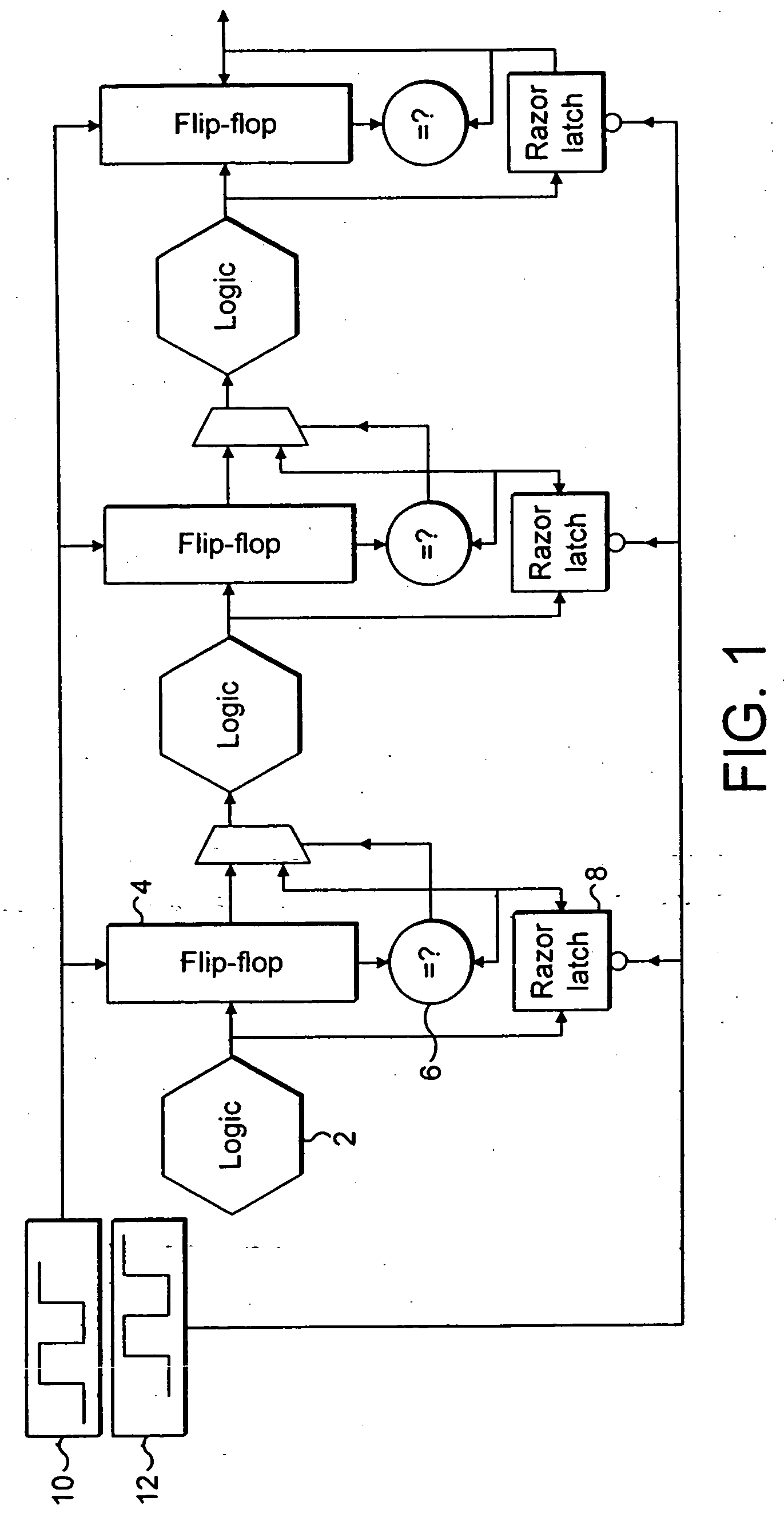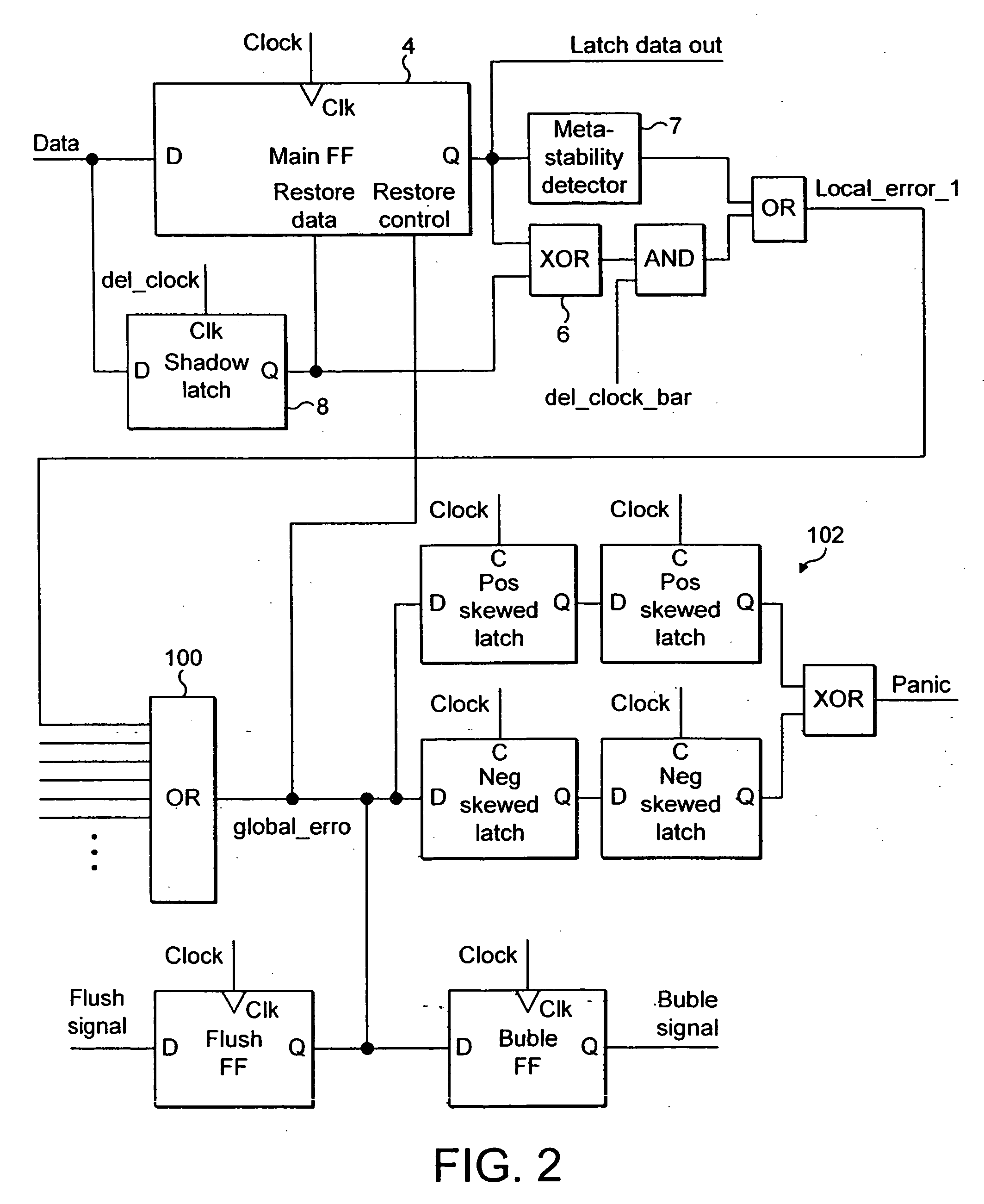Error recovery within processing stages of an integrated circuit
a technology of error recovery and integrated circuit, which is applied in the field of integrated circuits, can solve the problems of requiring a large number of delay latches to be added to the integrated circuit to implement error detection and recovery, and affecting the forward-progress of computation, etc., and achieves the effect of increasing the probability of errors in operation and reducing the likelihood of errors in operation
- Summary
- Abstract
- Description
- Claims
- Application Information
AI Technical Summary
Benefits of technology
Problems solved by technology
Method used
Image
Examples
Embodiment Construction
[0066]FIG. 1 illustrates a part of an integrated circuit, which may be a part of a synchronous pipeline within a processor core, such as an ARM processor core produced by ARM limited of Cambridge, England. The synchronous pipeline is formed of a plurality of like processing stages. The first stage comprises processing logic 2 followed by a non-delayed latch 4 in the form of a flip-flop together with a comparator 6 and a delayed latch 8. The term latch used herein encompasses any circuit element operable to store a signal value irrespective of triggering, clock and other requirements. Subsequent processing stages are similarly formed. A non-delayed clock signal 10 drives the processing logic and non-delayed latches 4 within all of the processing stages to operate synchronously as part of a synchronous pipeline. A delayed clock signal 12 is supplied to the delayed latches 8 of the respective processing stages. The delayed clock signal 12 is a phase shifted version of the non-delayed c...
PUM
 Login to View More
Login to View More Abstract
Description
Claims
Application Information
 Login to View More
Login to View More - R&D
- Intellectual Property
- Life Sciences
- Materials
- Tech Scout
- Unparalleled Data Quality
- Higher Quality Content
- 60% Fewer Hallucinations
Browse by: Latest US Patents, China's latest patents, Technical Efficacy Thesaurus, Application Domain, Technology Topic, Popular Technical Reports.
© 2025 PatSnap. All rights reserved.Legal|Privacy policy|Modern Slavery Act Transparency Statement|Sitemap|About US| Contact US: help@patsnap.com



